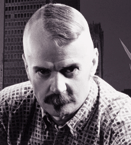|
Alexander Bard was born on March 17, 1961.
He lives in a roof top apartment
on one of islands of Stockholm. Most days he walks 400 meters to his
farm - four 17th century houses and a garden in central Stockholm - from where
he runs his music and artist management company Bullgod. He co-founded Sweden's
biggest independent record company, Stockholm Records,in 1992 , but sold all
his shares to Universal , the world's biggest record company. He produced
music bands "Army of Lovers", "Vacuum" and now he works with his new project
"Alcazar".
His band Army Of Lovers sold 6 million plus records and
toured the world . But he was always more comfortable with being a record
producer. Together he and his business partner Peter Swartling manage and
produce the majority of the artists known to be part of the Swedish
musicexport wave.
Bard studied at the Stockholm School of Economics in the 1980s and got stuck
there. He regularly gives lectures at the School and his clients include major
Scandinavian companies like Ericsson, Volvo and Astra . Bard also teaches at
Swedish government institutions and the Swedish Police Force. As part of the
Swedish political -scene, he is a well-known and constantly newsworthy
contributor through both TV, newspapers and magazines.
Following intense studies of all the major world religions, Alexander Bard
converted to Zoroastrianism in 1983. He had his navjote performed in 1996 by
Mobed Kamran Jamshidi in Gothenburg. Bard is a member of the Swedish
Zoroastrian Society and a board member of the Stockholm-based organization
HANZAR (Hanjamana Zarathushtri). He loves philosophy and especially the
tradition that runs from Nietzsche via Heidegger, the Frankfurt School and on
to the French postmodernists Foucault, Deleueze and Baudrillard.
On 1 september , 2000 was released his book "The Netocracy" with subtitle
"A book about the electronic class society", which he co-wrote with sociologist
Jon Soderquist . The book will be translated into English soon , it attempts
to visualise the future sociological structure of the information community .
|



